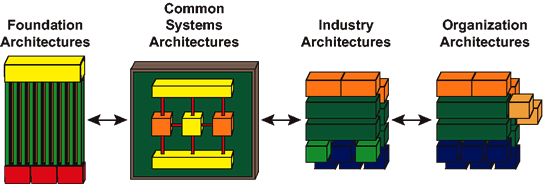Case Study: Implementing the TOGAF Enterprise Continuum at TechSolutions Inc.
Introduction
TechSolutions Inc., a mid-sized software development company, faced significant challenges in managing its enterprise architecture. With a growing portfolio of products and services, the company struggled to ensure alignment between its business objectives and the architectural frameworks guiding its development efforts. To address these challenges, TechSolutions decided to implement the TOGAF Enterprise Continuum as part of its enterprise architecture strategy.
Background
Company Profile
- Name: TechSolutions Inc.
- Industry: Software Development
- Employees: 500+
- Headquarters: San Francisco, CA
- Key Products: Custom software solutions, cloud services, and mobile applications.
Challenges
- Misalignment of Business and IT: The rapid growth of TechSolutions led to a lack of alignment between business goals and IT initiatives, resulting in inefficiencies and wasted resources.
- Redundant Architectures: Various teams developed their own architectures independently, leading to duplicated efforts and inconsistent standards across the organization.
- Communication Gaps: Stakeholders, including executives, architects, and developers, struggled to communicate effectively about architectural frameworks due to varying terminologies and contexts.
Implementation of the TOGAF Enterprise Continuum
Step 1: Establishing the Framework
TechSolutions began the implementation by educating its teams about the TOGAF framework and the concept of the Enterprise Continuum. Workshops were conducted to explain how the Enterprise Continuum could help classify and organize architecture assets.
- Training Sessions: Conducted for architects, business analysts, and management to understand the Enterprise Continuum.
- Stakeholder Engagement: Involved key stakeholders in discussions about the company’s strategic objectives and how architecture could support them.
Step 2: Classifying Architecture Assets
Using the Enterprise Continuum, TechSolutions classified its existing architecture assets into three continua:

-
Enterprise Continuum:
- Identified contextual assets such as business goals, strategic initiatives, and existing policies.
- Developed a comprehensive inventory of these assets to inform future architectural decisions.
-
Architecture Continuum:
- Established reusable Architecture Building Blocks (ABBs) that could serve as foundational elements for various projects.
- Created a standardized framework for defining common system architectures and industry standards, ensuring that future developments could leverage these assets.
-
Solutions Continuum:
- Cataloged existing Solution Building Blocks (SBBs), which included software components, platforms, and third-party services.
- Defined a clear process for evaluating and integrating these solutions into new projects, aligning them with the overall architecture.
Step 3: Enhancing Communication
To bridge the communication gaps, TechSolutions implemented a consistent vocabulary based on the Enterprise Continuum. This included:
- Standardized Terminology: Developed a glossary of architectural terms to ensure all stakeholders were speaking the same language.
- Regular Collaboration Meetings: Established bi-weekly meetings that brought together business and IT representatives to discuss ongoing projects, leveraging the Enterprise Continuum framework for context.
Step 4: Continuous Improvement
TechSolutions recognized that the implementation of the Enterprise Continuum was an ongoing process. They established a governance framework to ensure continuous alignment and improvement:
- Feedback Loops: Created mechanisms for gathering feedback from project teams on the effectiveness of the Enterprise Continuum in their work.
- Regular Reviews: Conducted quarterly reviews to assess the state of the architecture and identify areas for improvement or adjustment.
Results
The implementation of the TOGAF Enterprise Continuum yielded significant benefits for TechSolutions Inc.:
- Improved Alignment: The company achieved better alignment between business goals and IT initiatives, resulting in more strategic project selection and resource allocation.
- Reduced Redundancy: By leveraging reusable ABBs and SBBs, TechSolutions minimized duplicated efforts and established consistent architectural standards across teams.
- Enhanced Communication: The standardized terminology and regular collaboration meetings improved communication among stakeholders, fostering a culture of collaboration and shared understanding.
- Increased Efficiency: With a clearer architectural framework in place, project teams were able to deliver solutions more efficiently, reducing time-to-market for new products.
Conclusion
The implementation of the TOGAF Enterprise Continuum at TechSolutions Inc. transformed the company’s approach to enterprise architecture. By classifying architecture assets and fostering improved communication, TechSolutions aligned its IT efforts with business objectives, reduced redundancy, and enhanced overall efficiency. This case study demonstrates the value of the Enterprise Continuum as a strategic tool for organizations seeking to optimize their enterprise architecture and drive business success.

